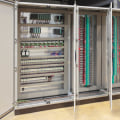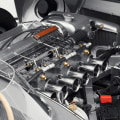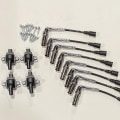From Formula 1 race cars to your daily commuter vehicle, the suspension system is a critical component of any vehicle. Suspension specs and types have a major impact on how your vehicle performs, handles, and looks. Knowing the different types of suspension and their specs is essential for anyone who wants to upgrade or customize their vehicle. In this article, we'll explore everything you need to know about suspension specs and types.
We'll start by looking at the different types of suspension and what makes them unique. We'll also discuss what specifications matter when it comes to suspension and how they can affect your driving experience. Finally, we'll explore how you can customize your vehicle's suspension to get the perfect ride.
Suspension specs and types
play an essential role in the performance and handling of any vehicle. Suspension components are responsible for providing a smooth ride, enabling the vehicle to absorb bumps and other irregularities in the road, and allowing it to corner effectively.It is important to understand the different components of a suspension system and their respective specifications, as they can have a significant impact on the performance of a vehicle. The suspension system is made up of several components, including springs, dampers, control arms, stabilizer bars, and bushings. Springs are responsible for supporting the weight of the vehicle, absorbing bumps in the road, and providing stability while cornering. Dampers are responsible for controlling the rebound of the springs and preventing them from bouncing excessively.
Control arms provide lateral stability and allow the wheels to move independently. Stabilizer bars reduce body roll when cornering and help maintain control. Bushings provide isolation from road vibration and noise. It is important to understand how these components work together to produce a smooth ride.
The spring rate determines how easily the springs compress and rebound. The dampers control how quickly the springs rebound after being compressed. The stiffness of the control arms will affect how quickly the wheels move in response to steering input. The stabilizer bars will affect how much body roll there is when cornering.
And finally, the bushings will determine how much vibration and noise are transmitted into the cabin. It is also important to understand that different suspension setups will have different effects on a car's performance. A softer suspension setup will provide more comfort but less stability when cornering. A stiffer setup will provide more stability but less comfort.
It is important to find a balance between comfort and performance that suits your driving needs. When selecting a suspension setup for your vehicle, it is important to consider not only its specs but also its type. There are two main types of suspension: independent and non-independent. Independent suspension systems allow each wheel to move independently, providing better ride comfort and handling.
Non-independent suspensions link all four wheels together, providing better stability but less comfort. In addition to these two main types of suspension, there are several other variations that can be used to customize a vehicle's ride and handling characteristics. For example, some cars have adjustable suspension systems that allow drivers to adjust the stiffness of their setup depending on their preferences or driving conditions. Other cars have active suspension systems that can automatically adjust the stiffness of their setup based on sensors that detect road conditions and driving style. In conclusion, suspension specs and types play an essential role in the performance and handling of any vehicle.
It is important to understand what each component does and how its specs affect a car's performance. Different suspension setups will provide different levels of comfort and performance, so it is important to find a balance that suits your driving needs.
Types of Suspension Systems
Suspension systems play a crucial role in determining a vehicle's performance and handling. There are a variety of suspension systems available, each of which has its own characteristics and advantages. The most common types of suspension systems are MacPherson struts, double wishbones, and multi-link systems.MacPherson struts:
MacPherson struts are the most commonly used suspension system in cars today.They consist of a strut (a metal spring) and a shock absorber, mounted on a single arm. This type of suspension provides good overall handling and is relatively inexpensive to maintain. However, it is not as efficient at absorbing bumps as other types of suspension systems.
Double wishbones:
Double wishbones are also known as double A-arm suspension. This type of suspension consists of two A-shaped arms that are connected to the wheel hub.The advantage of this type of suspension is that it offers better control and road feedback than MacPherson struts. It also offers better bump absorption.
Multi-link systems:
Multi-link systems are more complex than MacPherson struts or double wishbones. They consist of multiple links that are connected to the wheel hub. This type of suspension offers better handling and ride quality than other types, but it is more expensive to maintain.It also requires more space under the vehicle. Each type of suspension system has its own advantages and disadvantages. When choosing a suspension system for your vehicle, it is important to consider all of these factors so that you can make an informed decision.
Suspension Specs
Suspension specs play a key role in the performance and handling of any vehicle. The various specs involved in suspension systems include spring rates, dampers, anti-roll bars, and more. Each of these specs interact with each other in different ways to affect the performance of a car.Spring Rates
Spring rates refer to the amount of force needed to compress or extend a spring.The higher the spring rate, the stiffer the spring is, and the less it will absorb bumps and vibrations. Spring rates also affect the car's ride height and cornering ability.
Dampers
Dampers are components that help absorb shocks and vibrations from the road surface. They work with springs to help reduce the amount of vibrations that are transferred to the car's frame. There are two types of dampers: shock absorbers and struts.Anti-Roll Bars
Anti-roll bars are components that reduce body roll when cornering.They help keep the car stable and balanced during cornering by limiting the amount of suspension travel on one side of the car relative to the other. Anti-roll bars also help reduce body roll during braking and acceleration.
How These Specs Interact
These different specs all interact with each other to affect a car's performance. For example, a stiffer spring rate will reduce body roll during cornering, but it will also increase harshness over bumps. Increasing the damping forces can help reduce harshness over bumps, but it can also reduce cornering ability.Therefore, it is important to find a balance between these different specs in order to achieve the best performance. In conclusion, suspension specs and types are an essential factor to consider when assessing a vehicle's performance and handling. Different types of suspension systems provide varying levels of comfort, stability, and responsiveness, and specs such as spring rate, damping, and motion ratio play a major role in determining how a car will perform in different conditions. By understanding the importance of suspension specs and types, you can make informed decisions when choosing the right car for you. Take the time to learn more about suspension specs and types, and you'll be able to make the best decision for your needs. With the right knowledge and research, you can ensure that your vehicle will provide an optimal driving experience that meets your expectations.


